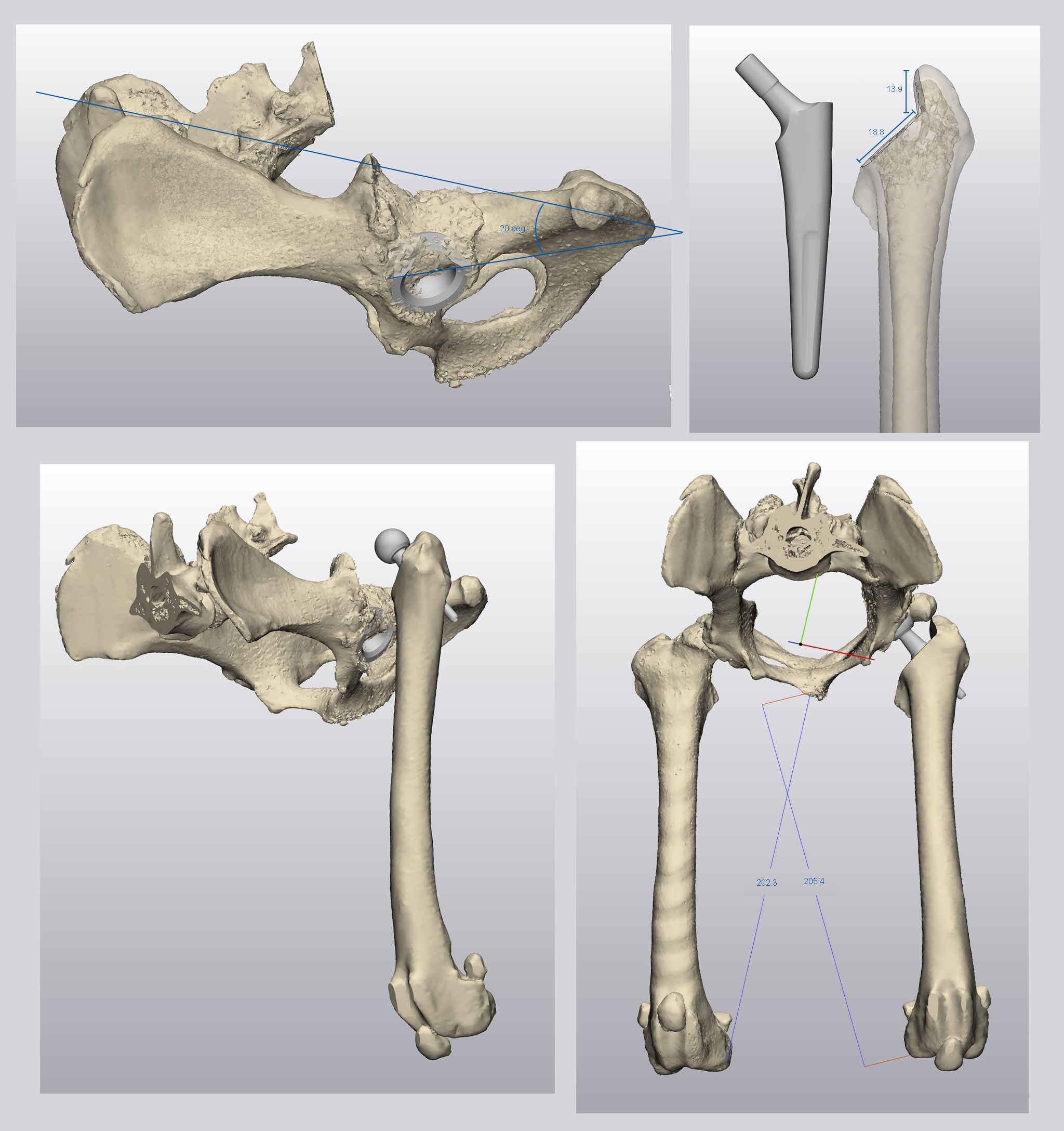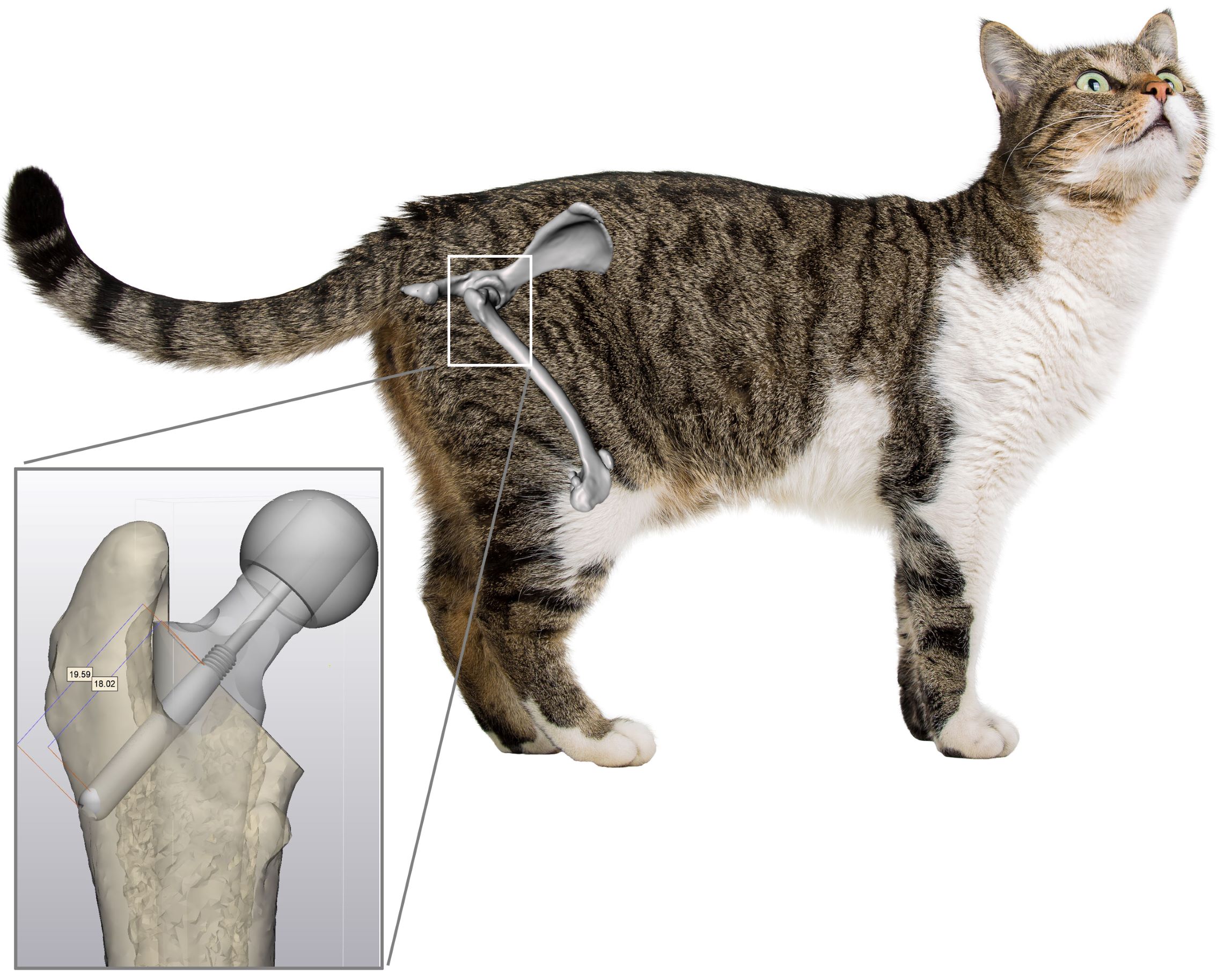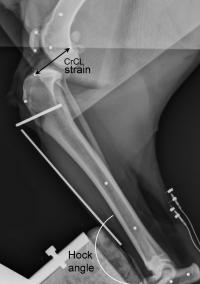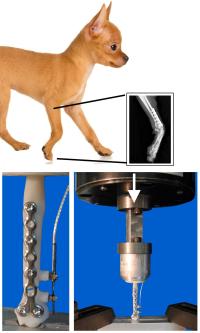Canine and Feline Orthopedic Health
The VORL has done and continues with multiple studies on the optimal design and stability of various joint replacements and bone fracture repair.
Canine and Feline Hip Replacement Research

Total hip replacement (THR) is a well-accepted surgical option for dogs with disabling coxofemoral diseases. The mechanical stability of the bone-implant interface and the forces on the bone that the implant create are important factors to the success of the implant. The VORL mechanically tests existing and new implant designs including fit of the acetabular cup into the pelvis and performance of the stem in the femur. Strength compared to native bone and stress on the surrounding bone due to the implant are determined in-vitro.

Three-Dimensional Assessment of the Feline Acetabulum
Common problems of the feline hip joint include fractures, luxations, and degenerative joint disease (hip dysplasia). When necessary, a total hip replacement (THR) is recommended, as it provides a pain-free and fully functional joint. A press-fit cementless THR implant has been suggested to have fewer long-term complications than cemented implants; however, these are currently only available for large and medium breed dogs. Although implant companies are working on a press-fit cementless cup for small breed dogs or cats, they are currently unavailable.
There are differences in regional load bearing between dogs and cats, which suggest the presence of key differences in the geometry of the acetabulum in cats compared to dogs. The hypothesis of this study is that the 3D acetabular geometry will differ between cats and dogs. Any geometric differences will influence the design of a cementless acetabular cup for cats and its optimal orientation. The goal of this study is to accurately measure the 3D geometry of the feline pelvis using computed tomography (CT), which will aid in the design of an acetabular component for cementless THR in cats.
Canine Stifle CCL Rupture Repair

Studies have been done on the effect of hock (ankle) stability on the Cranial Cruciate Ligament and its propensity to be injured.
Canine Bone Fracture Surgical Interventions

The optimal position and material of fracture repair plates in small-breed dogs has been done and is ongoing. When a bone fractures, both implant stability and bone biology are important for the fracture to heal. Manufacturing the perfect size and material for a bone plate that works with bone biology can be complicated in small breed dogs. To study this, a 3D printed artificial bone replica is created from the x-ray image. Then the bone replicas are tested with the implants in a strength testing machine with the goal of optimizing the implant’s design.
The optimal method of surgically repairing a canine humeral condyle fracture using 3 different techniques has been done.
Contacts
Dr. Amy Kapatkin
Small animal orthopedic surgeon
Dr. Denis Marcellin-Little
Small animal orthopedic surgeon
